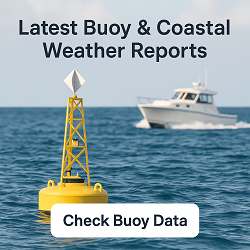Bothell, WA Weather Forecast and Current Conditions
Current Conditions From Nearby Local Station

Feels Like 55°F
at
Current Conditions From Nearby Local Station

Feels Like 55°F
at
Point Forecast at a Glance







7-Day Temperature Trend
Week Ahead Summary
High temperatures remain relatively stable through the week, ranging from 55°F to 60°F. Unsettled weather expected with rain likely on at least 7 days.
Climate Context
This week's forecast shows temperatures running 1°F below the historical average for October. Normal highs for this period are around 59°F with lows around 44°F.
This Date in Weather History
1910 - A hurricane made a loop off the southwest coast of Florida. Winds above 100 mph were reported at Fort Myers FL, and the barometric pressure at Sand Key reached 28.40 inches.
More on this and other weather history
Bothell 7 Day Weather Forecast Details
Friday Oct 17

Day: A chance of rain between 11am and noon, then a slight chance of rain showers between noon and 3pm. Mostly sunny. High near 59, with temperatures falling to around 57 in the afternoon. North wind around 3 mph. Chance of precipitation is 30%. New rainfall amounts less than a tenth of an inch possible.

Night: A slight chance of rain after 5am. Partly cloudy, with a low around 41. East northeast wind around 2 mph. Chance of precipitation is 20%.
Saturday Oct 18

Day: Rain. Cloudy, with a high near 55. Southeast wind 2 to 7 mph. Chance of precipitation is 100%. New rainfall amounts between a tenth and quarter of an inch possible.

Night: Rain. Cloudy, with a low around 48. South wind 7 to 15 mph, with gusts as high as 29 mph. Chance of precipitation is 100%. New rainfall amounts between a quarter and half of an inch possible.
Sunday Oct 19

Day: Rain showers before 2pm, then showers and thunderstorms. Cloudy, with a high near 58. South southwest wind 6 to 12 mph, with gusts as high as 24 mph. Chance of precipitation is 90%. New rainfall amounts between a tenth and quarter of an inch possible.

Night: Showers and thunderstorms. Mostly cloudy, with a low around 46. Chance of precipitation is 80%. New rainfall amounts less than a tenth of an inch possible.
Monday Oct 20

Day: A slight chance of rain showers. Mostly cloudy, with a high near 60.

Night: A slight chance of rain showers before 11pm, then a chance of rain between 11pm and midnight, then a chance of rain showers. Mostly cloudy, with a low around 47.
Tuesday Oct 21

Day: A chance of rain showers. Mostly cloudy, with a high near 59.

Night: A chance of rain showers. Mostly cloudy, with a low around 45.
Wednesday Oct 22

Day: A chance of rain showers before 5pm, then rain likely. Mostly cloudy, with a high near 58.

Night: Rain. Mostly cloudy, with a low around 49.
Thursday Oct 23

Day: Rain. Cloudy, with a high near 60.

Night: Rain. Cloudy, with a low around 50.
Sun & Moon Monthly
Sunrise 7:32 AM
Sunset 6:18 PM
Last Light 6:49 PM
Moonset 4:55 PM

Close Tide Stations
Edmonds
(9 miles away)
Contiguous United States Extremes
Thu's High Temperature
99 at Rio Grande Village, TX
Fri's Low Temperature
9 at 27 Miles South Of Bonanza, UT
Weather Folklore
Wild geese fly high in pleasant weather and fly low in bad weather.
Current subscribers - login to your ClearSky account
About Bothell,
Bothell () is a city in King and Snohomish counties in the U.S. state of Washington. It is part of the Seattle metropolitan area, situated near the northeast end of Lake Washington in the Eastside region. It had a population of 48,161 residents as of the 2020 census.
The city lies along the Sammamish River, the historic home of the indigenous Sammamish people, and is adjacent to Kenmore and Woodinville. It was established in 1870 and platted by David Bothell and his family in 1888, shortly before the arrival of railroads in the area. The town was incorporated in 1909 and originally relied on logging and farming; in the mid-20th century, it became a bedroom community for workers commuting to Seattle and later other Eastside cities. Interstate 405 connects the city to other areas of the Eastside and functions as a bypass of Seattle.
Bothell's modern economy is centered around biotechnology and high-tech companies that have facilities that were developed in the late 20th century along North Creek and in the Canyon Park neighborhood, which was annexed by the city in 1992. The annexation also expanded the city limits into Snohomish County. The University of Washington Bothell was established in 1990 and opened its permanent shared campus with Cascadia College in 2000. Bothell redeveloped its downtown in the 2010s and 2020s and has seen an increase in residential density and its population as a result.
Content from Wikipedia, licensed under CC BY-SA 3.0.
How We Provide Better Local Weather
Current conditions: We use the nearest available station to your location - including professional MESONET/MADIS and local weather stations - often miles closer than regional airports.
Forecasts: National Weather Service point forecasts predict for your specific area, not broad regional zones, making them far more relevant to your location.

